CarEdge saved me over 4,500 dollars on a brand new Honda Pilot. I can't say thank you enough.
Price intelligence
Find a wide range of vehicle listings with market insights on new and used listings near you.


Help us personalize your CarEdge experience — it only takes a second.
Your answers help us personalize your CarEdge journey — we’ll follow up with tips and next steps that match your buying timeline.

What a year it has been. 2022 started with new and used car prices climbing to record highs, stubborn semiconductor chip shortages and a world at relative peace. As we wrap up the year and look forward to 2023, used car prices are tanking, new car inventory is rising, and global conflict has shaken everything from gas prices to automotive suppliers, in addition to affecting millions of lives. Our very own Ray Shefska has these 5 predictions for 2023, informed by over 40 years in the auto industry. Let’s dive in.
As we head into 2023, new car inventory is the highest since May 2021. That was when the semiconductor chip shortage sprang out of pandemic shutdowns, throwing the automotive industry into a downward spiral. The latter half of 2022 saw automakers slowly but surely climb back from the brink of empty lots, but the recovery is still underway. Manufacturers can make more cars today than they could a year ago. (See the latest new car inventory numbers here.)
But it’s not just easing supply constraints giving us hope for more new car inventory. Consumers are holding back on discretionary spending, and in many cases, that includes shiny new cars. Others are simply getting priced out of the new car market as MSRPs continue to rise. Check out the biggest MSRP increases for the 2023 model year.
As more cars are produced with fewer buyers on the market, new car inventory will grow in 2023. Those dealer lots won’t be so empty in six months’ time.

From early 2021 to mid-2022, used cars became so absurdly overvalued that even with 5-10% price drops in recent months, they still have very far to fall before prices are anywhere near historical norms. Lower prices and reduced dealer profit margins will be unable to overcome higher loan interest rates enough to offset affordability.
Dealers are making less money with each used vehicle sold, and they’re going to be doing their very best to squeeze every additional dollar out of used car sales, even as we transition from a seller’s market to a buyer’s market.
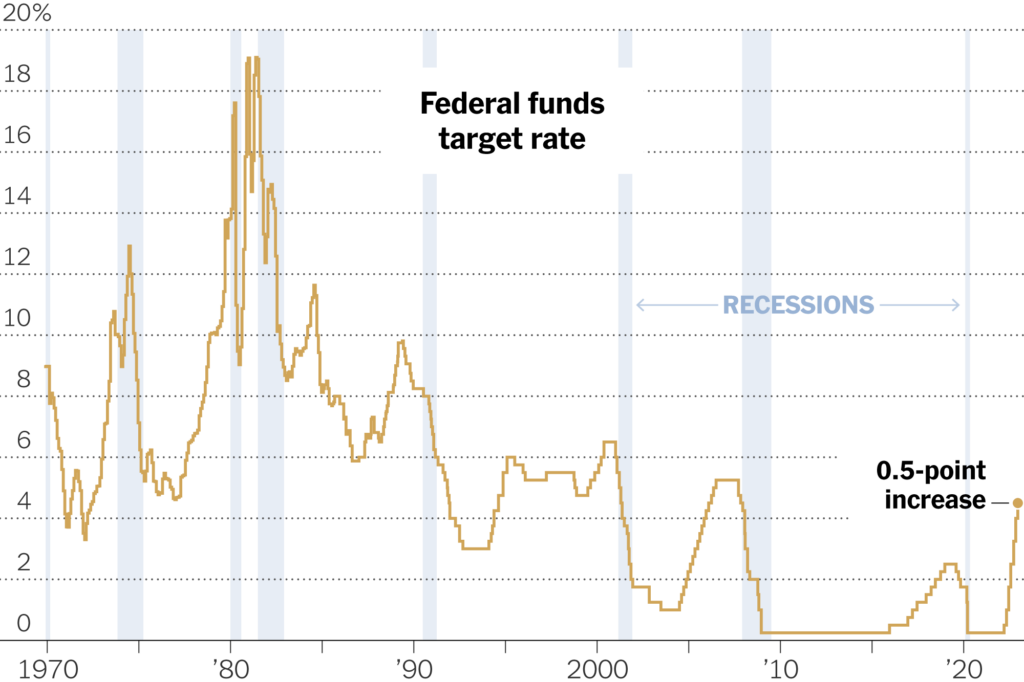
Interest rates for auto loans have doubled since 2021. As of late December 2022, the average used car loan APR was close to 10%, while used car loan APRs averaged 5%. Just how much does a bump up from 5% to 10% APR matter? Let’s run through some frightening math.
According to data from Experian, the average amount financed reached $41,665 for new vehicles and $28,506 for used vehicles in the third quarter of 2022. Let’s meet halfway at $35,000.
At 5% APR with a 72 month loan (we suggest sticking to 60 months or less), total interest paid comes out to $5,584. At 10% APR, this same loan will charge the borrower $11,685 in interest. Cars get a whole lot more expensive when taking the cost of borrowing money into account.
The Federal Reserve has indicated additional interest rate hikes are likely, although they could be smaller than the most recent 50 basis point increase. In a best case scenario, auto loan interest rates could peak at some point later in 2023.
Simply put, auto manufacturers will be looking for more ways to drive up demand for their new cars in 2023. It doesn’t take a genius to see that the easiest way to do that is to lower prices, especially following month after month of MSRP hikes.
Analysts at Cox Automotive found that the average incentive spend in November 2022 was $1,066, a 43% decrease since November 2021. Who will offer incentives first, the dealer or the manufacturer? We think 2023 will bring a bit of both as demand continues to soften.
We track the best new car incentives, updated monthly. Be sure to bookmark these pages if you’ll be in the market to buy or lease in 2023!
The Best Auto Loan Rates Right Now
The Best New Car Lease Deals This Month
All-cash car purchases are expected to climb to levels not seen in decades this year. It’s all about interest. Borrowing money is so expensive right now that a cash purchase is by default preferred by money-savvy consumers. Others are financing with the dealer to get a better trade-in value, only to pay off the loan weeks later. But there’s another dynamic at play here.
The post-pandemic economic recovery has been characterized by a new phenomenon that some economists are calling a ‘k-shaped recovery’. Essentially, some Americans are doing better financially now than ever before. They were fortunate enough to stay employed in 2020-2021, and with a whole lot less to do (and spend money on), their bank accounts are looking healthy. Others are still struggling to get back to where they were financially before COVID.
The result of the ‘k-shaped recovery’ can be seen in 2022’s healthy luxury sales, despite a shaky economy.
Taken together, does this mean it will be a buyer’s market in 2023? With interest rates soaring to levels not seen in over a decade, it’s not the type of buyer’s market we’d like to see, but it’s an improvement.
The good news is that in 2023, car buyers will have more negotiating power than in 2022. And we’re here to help!
Not sure where to start? Check out these no-strings-attached free guides:
Car Buying Cheat Sheet: Former Dealer Shares How to Negotiate Car Prices Confidently
How to Challenge Forced Front-End Add-Ons At a Dealership
The Best (and Worst) Electric Cars in 2023
The Car Buyer’s Glossary of Terms, Lingo, and Jargon
What do you think? What surprises are in store for vehicle ownership in 2023? Please, share your thoughts below!

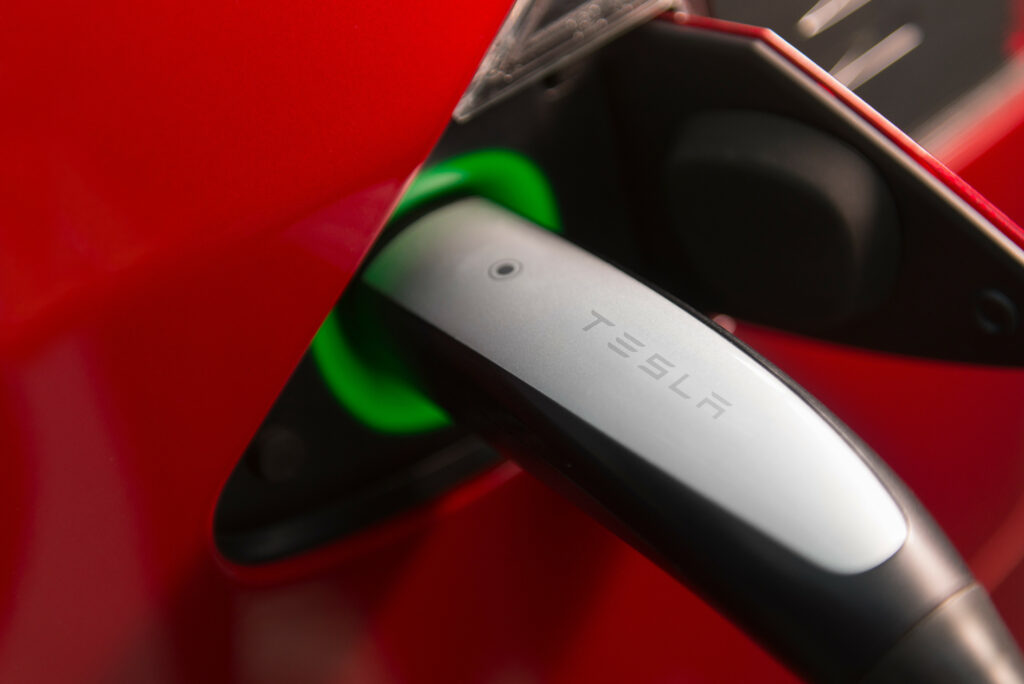
January 2023 Update: Tesla slashed prices for new models by up to 20% overnight. The top-selling Long Range Model Y dropped from $65,990 to $52,990. This means that not only are all Teslas cheaper now, but most Model 3 and Model Y spec options are now eligible for the $7,500 EV tax credit in the U.S., at least until March when more detailed eligibility requirements are to be released by the government.
Lower new Tesla prices will immediately hit used Tesla prices hard. With these changes, in 2023, expect used Tesla prices to be at least 20% lower than they were in 2022.
Now, on to the original article.
Used car prices have fallen over 25% in 2022, and have a lot further to fall. Generally, used electric car prices have been reluctant to drop, at least compared to the steep declines seen in other vehicle classes such as luxury SUVs, crossovers and compact cars. The picture is different for used Tesla prices heading into 2023. Long the best-selling EVs by raw numbers and market share (more on that here), Tesla became the darling of auto market speculation in 2022. Thousands of Tesla buyers flipped their new cars for a profit on the used car market just weeks to months after taking delivery.
In 2023, used electric car prices are in for a rude awakening. Here’s where things stand today, and where prices are headed in the near future.
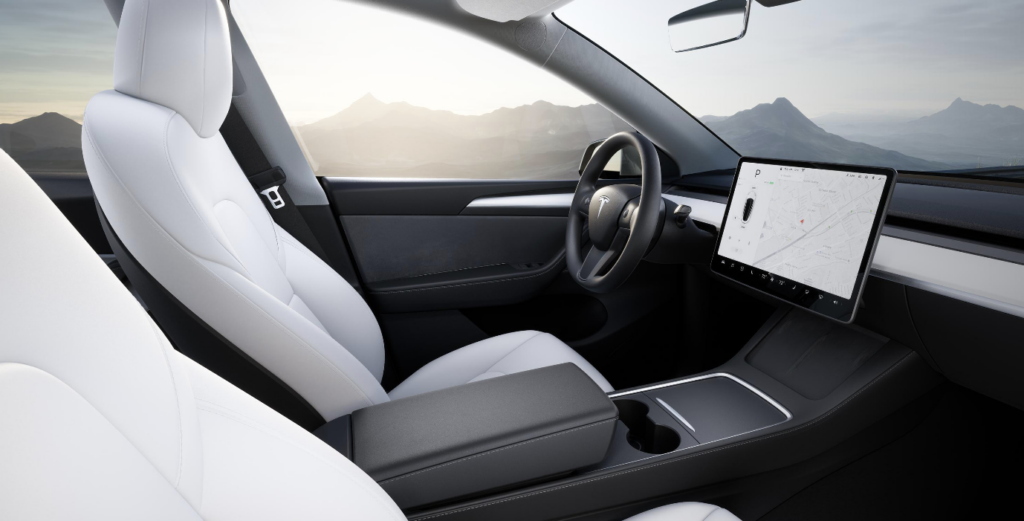
According to Edmunds data shared with Reuters, used Tesla prices were down 17% in December for the July peak. In July, the average price of a used Tesla was $67,297, but six months later the average price had fallen to $55,754. It’s all about perspective here: the overall used car market dropped 4% at the retail level during the same period, and wholesale prices dropped much more, as you can see here.
Used Teslas are sitting on dealer lots for much longer these days. In November, used Teslas sat on dealer lots for 50 days before selling on average, compared with 38 days for all used cars.
Who would’ve guessed it? Tesla cars couldn’t remain appreciating assets forever. “You can’t sell your current Tesla for more money than you paid for it, which was true for a lot of the past two years,” said Karl Brauer, executive analyst at car sales website iSeeCars.com.
As we approach the new year, there are 1,085 used 2022 model year Teslas for sale on CarEdge Car Search. A third of these nationwide listings have less than 5,000 miles on the odometer. In fact, roughly one third of ALL used Tesla listings are 2022 models. More noteworthy is how long used Teslas are remaining on the market.
As recently as July 2022, analysts at iSeeCars found that the Tesla Model Y was the fastest-selling used car in the United States. The Model 3 and Model X were #5 and #6 on the list, right behind the Toyota Prius hybrid and the all-electric Ford Mustang Mach-E. It was a time of record gas prices, and electric mobility was very appealing.
Fast forward to the last days of 2022, and 69 percent of the 5,800 used Teslas on the market nationwide have been listed for greater than 38 days, the overall industry average. Nearly 40 percent have been listed for sale for over 90 days.
And then there were the flippers. Tesla flippers made good money for a while. Wait times were between two and six months for factory-ordered Tesla EVs. Flippers would order a brand-new Tesla from the factory (often paying cash), with the intention of selling for a premium to an impatient buyer weeks if not days after taking delivery. The LA Times featured once successful Tesla flippers in this fascinating story.
The Tesla flippers flooded the market with gently used Teslas, the buyers vanished, and we’re left with plummeting prices for used Teslas.

These are the biggest factors that will influence used Tesla prices in 2023:
We recently took a deep dive into why our auto experts think used car prices will continue to decline in 2023. Historically, Tesla has bucked the mainstream trends, but that era may have come to a close. Here’s a summary of what our team expects in 2023:
Why are used car prices so likely to drop further?
We expect used Tesla prices to soften in 2023, especially when considering yet another factor, revised EV tax credits. More on that below.
The Inflation Reduction Act of 2022 replaced the original EV tax credit in place since 2009 with new rules and eligibility requirements. These are the biggest changes taking effect in 2023 for new EVs:
There’s now a used EV tax credit, but before you get too excited, the used EV tax credit has the following eligibility requirements in 2023:
Used Tesla prices have fallen, but they’ll have to fall a whole lot more to approach the $25,000 price cap. Barring an astonishingly severe downturn, used Teslas won’t qualify for the used EV tax credit in 2023.
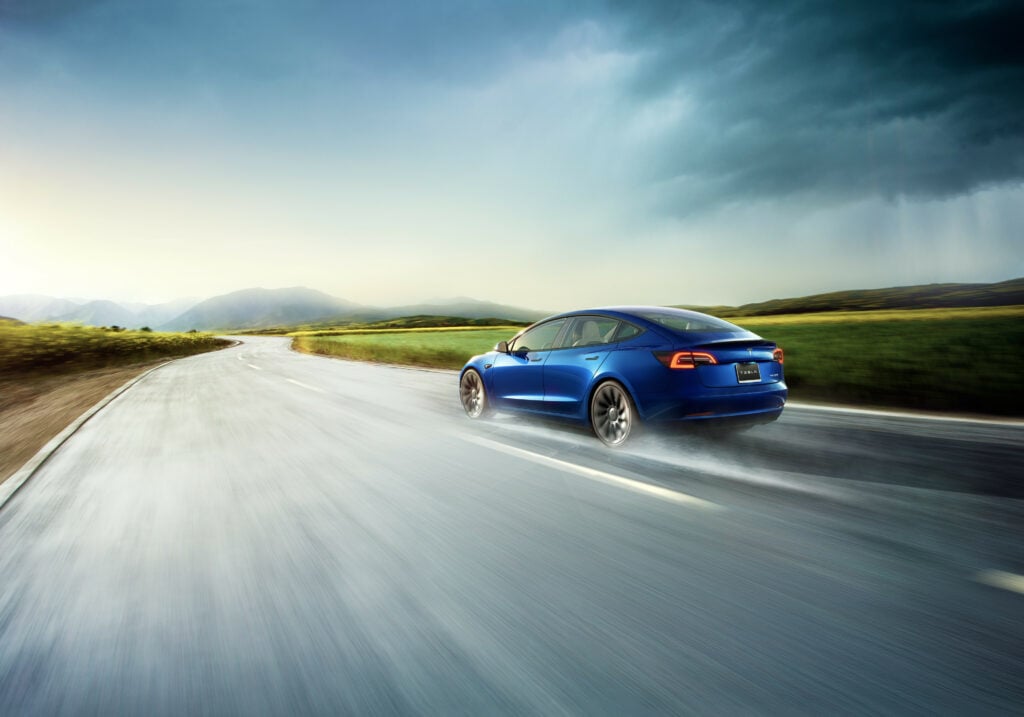
In addition to higher interest rates, rising competition, a flooded market and general economic worries, consumer demand for used Tesla cars will decline further simply because brand new Teslas will again qualify for EV tax credits, for the first time since 2019. Of course, they’ll have to fall under the strict price caps of the new law. Few buyers will want to pay over $50,000 for a used Tesla Model 3 when a brand-new one could be had for less with the new tax credit. This continues in 2024, when the EV tax credit becomes a point-of-sale rebate.
CarEdge provides depreciation forecasts for Tesla models using real market data. The graph below shows expected depreciation for the Tesla Model Y over the next decade.
See Tesla cost of ownership and depreciation forecasts at caredge.com
Now more than ever, you CAN negotiate used Tesla prices. Floorplanning costs are high, meaning that car dealers are paying more each day that a used Tesla sits on their lot. With CarEdge Car Search, you can see exactly how long a car has sat on the lot, and then use that information as leverage to negotiate lower prices.
We love free stuff as much as the next guy. Check out these 100% free, no-strings-attached car buying guides.
Car Buying Cheat Sheet – Take This With You!
Used Car Price Trends (Updated Weekly)
The Car Buyer’s Glossary of Terms, Lingo, and Jargon
The Best and Worst Electric Cars in 2023
See all free guides, news and reviews here.

There’s a troubling trend emerging in the auto industry. Automakers are dropping base models from their lineups, effectively increasing the starting price by thousands of dollars. Toyota, Honda, Mazda and Kia have all done this in recent months, and it’s likely to continue in 2023. New car prices are increasing in 2023, but prepared buyers can still negotiate to save money.
Here are 10 models seeing big MSRP increases in 2023, and how you can still negotiate a better deal.
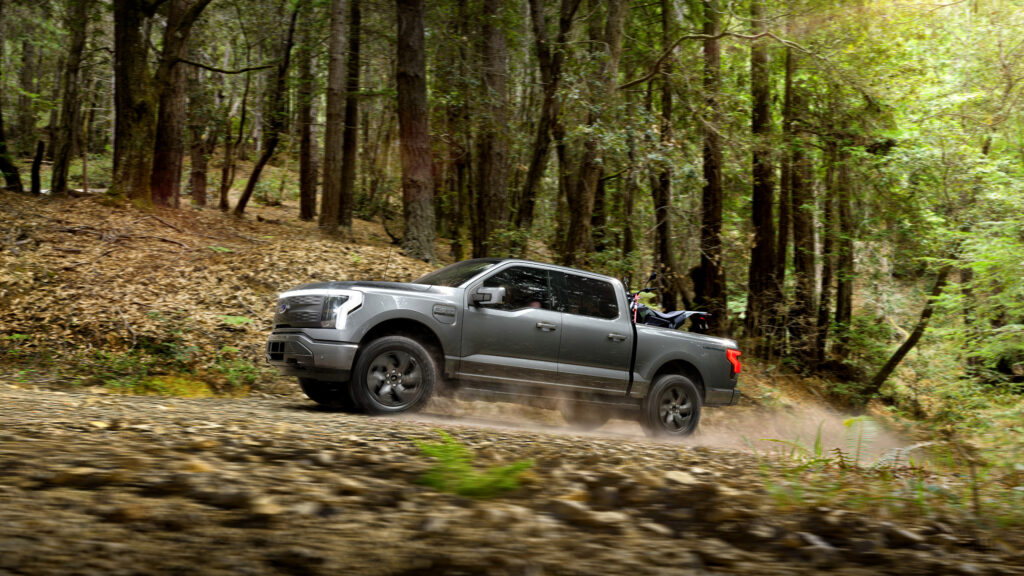
2023 Pricing: From $59,974 to $97,819 (+40% since 2022)
2022 Pricing: From $41,669 to $93,609
When Ford launched the all-electric F-150 Lightning in early 2022, the price seemed too good to be true for many reviewers. Was Ford really going to offer so much value for well under $50,000? It turns out that was indeed too sweet of a deal to last. Ford has since announced multiple price increases for the entry-level F-150 Lightning Pro. In 2023, the starting price of the Lightning Pro is 40% higher than the original price one year prior.
See Ford F-150 depreciation charts and maintenance costs.

2023 Pricing: From $58,365 to $78,300(+15.6%)
2022 Pricing: From $50,500 to $66,550
See Toyota Sequoia depreciation charts and maintenance costs.
See Sequoia listings near you.
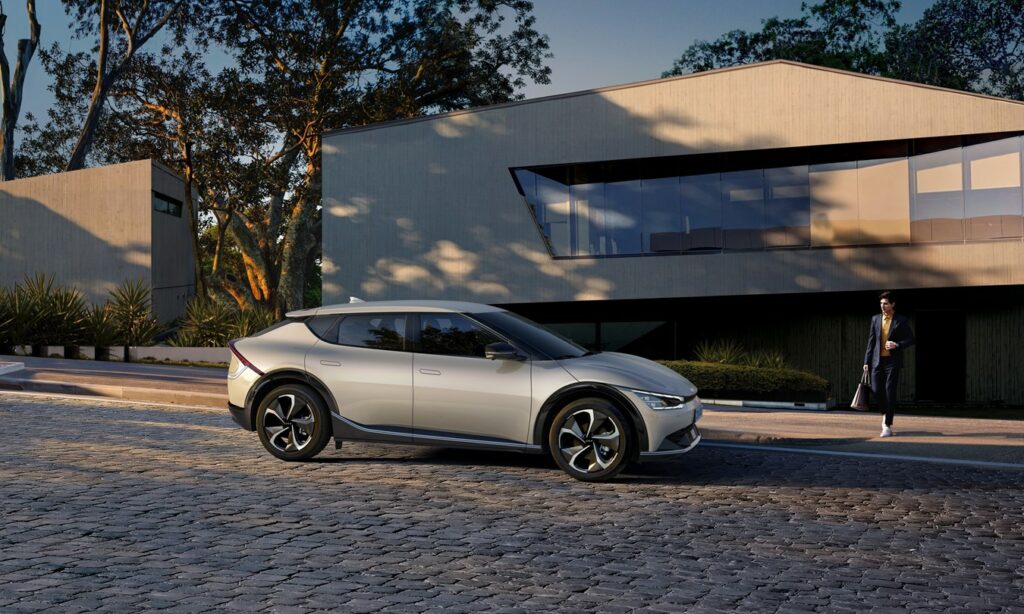
2023 Pricing: From $49,795 (+16.6%)
2022 Pricing: From $42,695
The all-new Kia EV6 and it’s sibling the Hyundai IONIQ 5 were welcomed with rave reviews. Up to 310 miles of range, ultra-fast charging and unique looks, what’s not to like? Perhaps the EV6 is too popular, because Kia raised the starting price by $7,100.
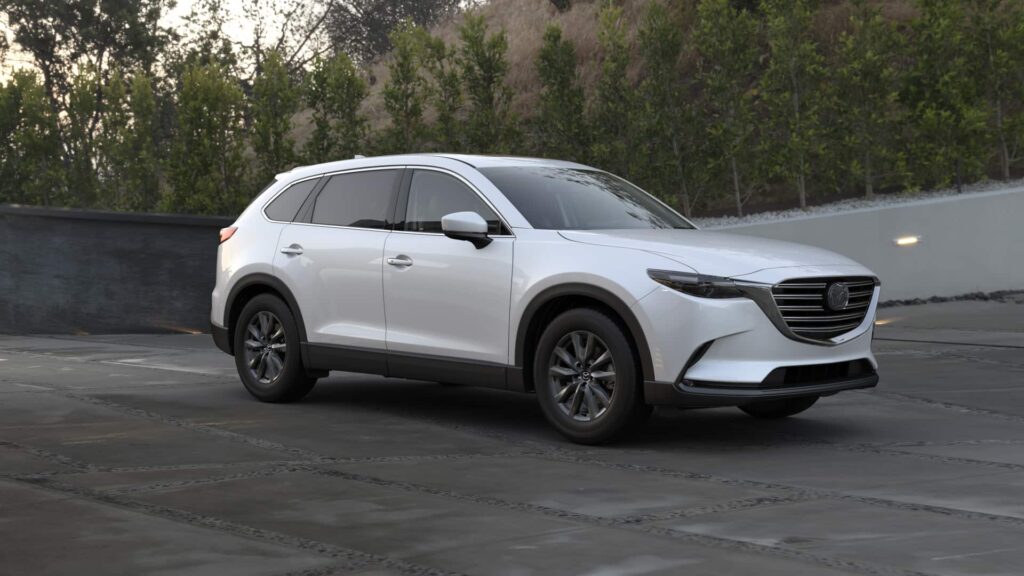
2023 Pricing: From $40,025 (+8.4%)
2022 Pricing: From $36,905
Dropping the base model is a troubling trend, and Mazda is jumping onboard. With the elimination of the Mazda CX-9’s base model, the starting price of the CX-9 has jumped 8.4% to $40,025.
See Mazda CX-9 depreciation charts and maintenance costs.

2023 Pricing: From $31,110 to $43,308 (+16%)
2022 Pricing: From $26,800 to $39,440
You know new car prices are increasing when Honda bumps prices by 16%. The CR-V is moving further and further away from the budget label it once wore. By percent increase, the CR-V’s 2023 pricing has increased more than almost every other mainstream vehicle on the market. At least it looks sharper with the refreshed design.
See Honda CR-V depreciation charts and maintenance costs.

2023 Pricing: From $37,865 to $75,245 (+5.2%)
2022 Pricing: From $35,990 to $74,230
Back in 2019, a Tundra could be bought brand-new for under $33,000. Today, your more likely to see starting prices closer to $40,000. The days of full-size trucks under $30,000 are gone.
See Toyota Tundra depreciation charts and maintenance costs.

2023 Pricing: From $29,995 to $38,330 (+10%)
2022 Pricing: From $27,295 to $34,710
It feels like just yesterday that the Compass was available for under $25,000 with incentives. Today, the Compass starts well over $30,000 out-the-door.
See Jeep Compass depreciation charts and maintenance costs.
See Compass listings near you.

2023 Pricing: From $38,250 (+6.4%)
2022 Pricing: From $35,950
Although the base Palisade gets a more modest $1,600 price bump, the trim level most buyers will be interested in, the Palisade XEL, goes up by $2,300 in 2023.
See Hyundai Palisade depreciation charts and maintenance costs.
See Palisade listings near you.

2023 Pricing: From $48,000 (+5%)
2022 Pricing: From $45,700
New year, new pricing for the Silverado 1500 LT. 2023 sees $2,300 added to the starting price tag of the LT. Other trims see similar increases.
See Chevrolet Silverado depreciation charts and maintenance costs.
See Silverado listings near you.

2023 Pricing: From $25,745 to (+8%)
2022 Pricing: From $23,845
Honda decided to drop the cheapest base model of the 2023 Civic. After dropping the Civic LX base model, the entry-level price for the Civic climbed by 8%.
See Honda Civic depreciation charts and maintenance costs.
Used car prices are down 17% at the wholesale level, and retail prices are finally coming down. New car prices remain at all-time highs, reaching a new record average transaction price of $48,681 in November. Will new car prices drop in 2023? It depends if you’re shopping new or used. Expect used car prices to continue a steady decline through at least the first half of 2023. For new cars, it’s a bit more complicated.
With new car prices, most analysts agree that the best we can hope for in 2023 is competitive financing offers (even as rates rise), the return of incentives to an extent, and hopefully the end of dealer markups for most models. With the 2023 model year pricing, automakers have raised sticker prices by 3% to 8% for most models. New car inventory is finally climbing out of the semiconductor-driven shortages of late 2021 and early 2022, but automakers don’t plan to even return lot inventory to normal? Why? They now know that they and their dealer networks can make a lot more money by keeping inventory slim, doing their best to keep the auto market in a perpetual ‘buyer’s market’.
Here’s our full breakdown of car price forecasts heading into 2023.
With the new and used car markets on the verge of lower prices, it’s time to put negotiation skills to work to save money on your car deal. Our team of Car Coaches is made up of industry pros with decades of experience selling cars for dealerships around the United States. Now, they’re sharing industry insights that dealers don’t expect you to know, all with the goal of saving you money, time and hassle.
Here are some 100% free resources our team of Car Coaches has created to help you navigate car buying in 2023.
Car Buying Cheat Sheet: Former Dealer Shares How to Negotiate Car Prices Confidently

If you’re looking for a used car deal this year, understanding the ins and outs of today’s changing used car market is key to saving more. In 2023, car buyers who are empowered with knowledge and negotiation know-how will save the most money. Those who are caught off guard are destined to overpay. At CarEdge, we’re real people helping you save real money. Our team is sharing which used cars are likely to have the best deals in 2023, and what to be mindful of along the way.
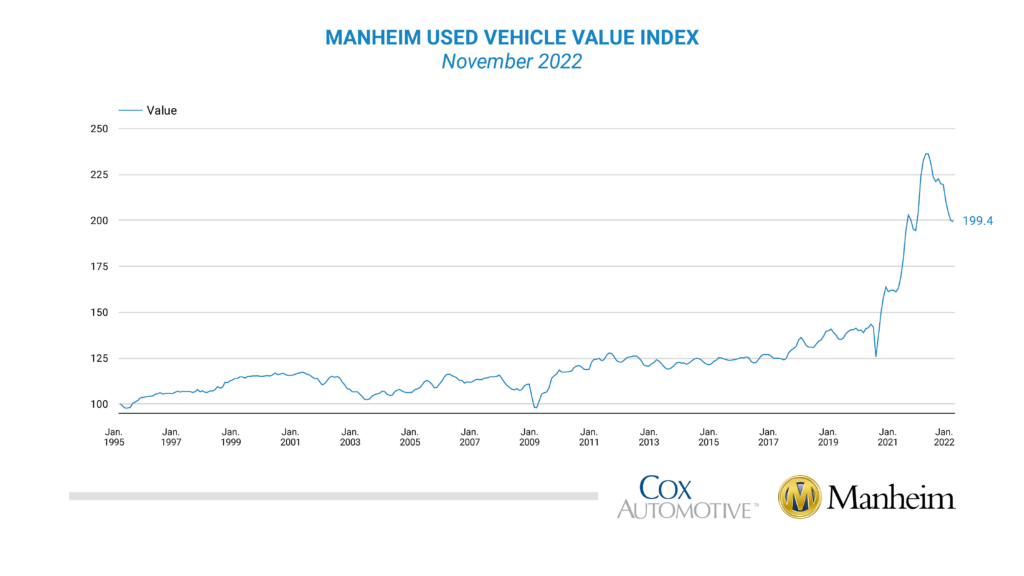
At the wholesale markets, used car prices have steadily dropped since mid-2022. Industry analysts are noting price declines on every front. As of November’s data, the Manheim Used Vehicle Value Index shows that used car prices are down 14.2% from one year prior. Digging into the details, we can see that some used car segments are dropping faster than others.
SUVs (including crossovers) have seen prices drop the most over the past year, dropping -16.4% since November 2021. Next up are luxury cars, which have had prices drop -15.6% on average over the past year. Here’s the year-over-year price drop breakdown for the vehicle classes with the greatest price declines, as of early 2023:
Full-size cars, subcompact cars, sports cars and luxury SUVs/crossovers all saw prices drop year-over-year, but saw declines below the overall industry average.
See the latest used car price data from Manheim here.
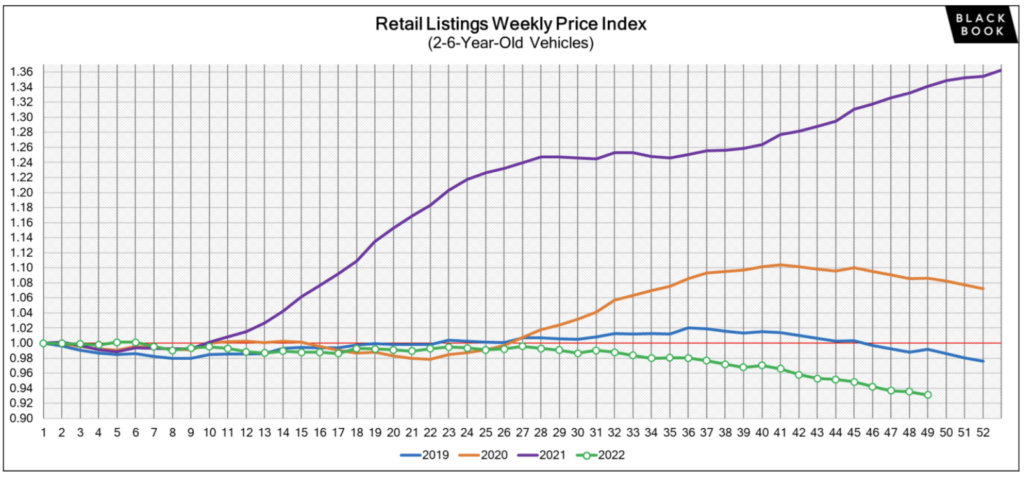
Black Book’s used car price data shows the same picture overall, with greater resolution. All 22 vehicle classes in Black Book’s wholesale used car auction weekly analyses have seen prices drop over the past six months. Wholesale transaction prices are easiest to track, hence the industry-wide focus on them.
Typically, wholesale price trends are reflected in retail prices with a 3-6 week delay.
At the wholesale level, used car prices began to fall in the overall market in mid-June of 2022. By early August, retail prices were also dropping. By 2023, retail used car prices had been dropping for nearly five months. Generally, used vehicle classes that saw the most price appreciation in 2021 have seen the greatest price drops, as they’ve had the farthest to fall.
According to Black Book transaction data, these are the used car segments with the greatest drops so far:
And these are the used car segments with the smallest price drops:
Understanding market price trends is the first step towards becoming a well-prepared used car buyer in 2023. Will these trends continue? Let’s take a closer look.
Used car prices are very likely to continue dropping in 2023.
Why are used car prices so likely to drop further?
What does this mean for you if you’re likely to buy a car in 2023? Don’t overpay, because the deals will be out there.
Our team of CarEdge Auto Experts help car buyers negotiate amazing deals every day. They’re as knowledgeable about the used car market as it gets, and they put their auto industry know-how to use saving our members money. These are the used vehicles they expect to have the best deals in 2023.
Phil, CarEdge Auto Expert: “I think the compact and midsize crossover segments will continue to see good deals. For example, Toyota RAV4s and comparable crossovers continue to see declines in retail pricing. This falls in line with compact to midsize vehicles. These have seen the highest appreciation in the last 12 months, and now they are seeing a large decline to offset that. Also, anyone looking for a used luxury vehicle should see some continued deals with values coming down.”
Jerry, CarEdge Auto Expert: “I expect to see deals/prices improve in near-new vehicle segment, primarily full-size trucks. As new vehicle shortage is improving, deals and incentives are improving, which will slowly bring back the price relationship between new and used prices. We are already seeing this, as there are discounts to be found of up to $8-10k on new, full-size trucks. This will push down the prices of near-new. Deals/availability in the up-to $20k segment will continue to be challenged.”
Mario, CarEdge Auto Expert: “With increasing incoming units and in-stock inventory on dealer lots (Toyota, Audi, BMW, Hyundai, Honda, and Subaru, for example), we are slowly moving away from reserving allocations or factory ordering, except for low volume models like EVs and Hybrids. For domestics it will always be an option, but even F150s and Wranglers have good stock on the ground in big markets.”
Justise, CarEdge Auto Expert: “Used sedans, and trucks are the best segment. Honda is still hard to negotiate but everything is getting much easier. The best deals are on Toyota, with new prices finally so negotiable used Toyotas can be gotten for a steal. All Jeeps are still very negotiable right now.”
Our CarEdge Coaches were quick to point out that so much has changed in the auto market over the past six months, and that a lot more will change before 2023 ends.
CarEdge is the largest consumer advocacy in the auto industry today. We help real people save real money on car deals. That’s why we share hundreds of free guides and resources in addition to the full benefits savings available for our members.
If you need a family hauler, say no more. But how many seats do you really need? It’s worth thinking about. Does it make the most sense to buy a vehicle for an outlier use-case scenario, such as taking one or two big road trips per year? Usually, it doesn’t.
For example, consider the differences in MSRP and fuel economy between a popular three-row SUV and a crossover. The 2023 Hyundai Palisade Limited starts at $46,800, but the slightly smaller 2023 Hyundai Santa Fe Limited starts at $40,050. Take it down a step further, and you can get a Hyundai Tucson Hybrid for under $39,000. That would be 37 miles per gallon in the Tucson Hybrid, compared to just 22 MPG in the Palisade, totaling $800 in annual fuel savings for the average American driver.
Take the cost of financing and fuel into account, and you’ll quickly realize that A LOT of money can be saved by shopping for everyday needs, rather than wants or ‘what ifs’.
Did you know that the average interest rate APR for a used car purchase is nearly double that of a new car? Sad, but true. According to Experian, The average auto loan interest rate was nearly 8% APR for new cars and 14% for used cars in late 2023. While percentages may seem insignificant on the surface, they have a huge impact on your monthly payment, and how much total interest you’ll owe over your loan term.
A pre-purchase inspection is a vehicle inspection that an independent mechanic conducts in advance of a vehicle sale. There is no universal checklist of what constitutes an inspection, but experienced mechanics tend to have their own methodology. Pre-purchase inspections (commonly referred to as PPIs) are simply a mechanical review of a vehicle in advance of a sale.
You should have a PPI conducted the same day, or within a few days of taking delivery of a vehicle. Learn more with our in-depth guide to pre-purchase inspections.

Ready to outsmart the dealerships? Download your 100% free car buying cheat sheets today. From negotiating a deal to leasing a car the smart way, it’s all available for instant download. Get your cheat sheets today!

One year ago, the auto market was in the depths of the new car shortage. Semiconductor chips were in short supply, and dealer markups were at their worst. In December 2022, the best year-end car deals are the best we’ve seen since 2020, when the average price paid for a new car was $38,000. Today, that figure is north of $48,000. Still, end-of-year deals present an opportunity for car buyers to get a deal at a time when rising interest rates are putting affordability out of reach for many.
Check out these other CarEdge resources, updated monthly:
The Best Auto Loan Rates This Month
The Best Lease Offers This Month
CarEdge Member Favorite: Car Buying Cheat Sheet

In December, Ford is advertising 3.9% APR for 60 months for select models:
See new and used Ford listings near you.
1.9% APR for 24 – 48 months
2.9% APR for 24 – 48 months
In December, Hyundai has a great financing deal at 0% APR for 36 months for the following models:
See Hyundai listings near you.

Chevrolet Equinox: $239 per month for 24 months with $2,289 due at signing
Chevrolet Blazer: $249 per month for 24 months with $2,709 due at signing
Chevrolet Colorado: $319 per month for 36 months with $4,149 due at signing
Chevrolet Silverado 1500 Crew Cab 4WD LT: $399 for 36 months with $3,949 due at signing
See current lease offer details from Chevrolet.
Hyundai Venue: $151/month with $3,281 due at signing
Hyundai Elantra: $229/month with $3,279 due at signing
Hyundai Kona: $209/month with $3,934 due at signing
Hyundai Santa Fe: $269 per month with $4,919 due at signing
Hyundai Kona Electric: $264 per month with $3,984 due at signing
Hyundai Palisade: $339 per month with $5,539 due at signing
See current lease offer details from Hyundai.
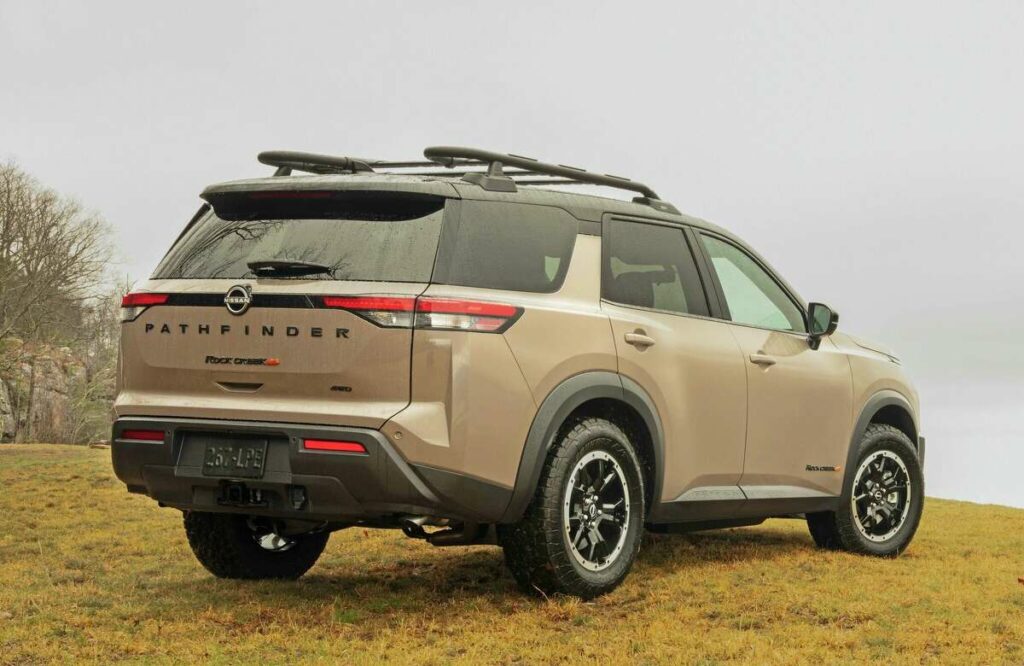
Nissan Frontier: $299 per month for 18 months with $1,709 due
Nissan Rogue (AWD): $359 per month for 36 months with $2,789 due
Nissan Murano (FWD): $329/month for 24 months with $3,549 due
Nissan Pathfinder (4WD): $469/month for 24 months with $3,959 due
See Nissan end-of-year car deals at nissanusa.com
Subaru Legacy (Premium): $269 per month for 36 months with $3,219 due at signing
Subaru Ascent: $329 per month for 36 months with $3,829 due at signing
Subaru Outback Premium: $345 per month for 36 months with $3,515 due
See Subaru end-of-year lease deals at subaru.com

Dodge is offering the best cash incentives in December as they try to clear out 2022 model-year vehicles.
$4,000 cash allowance for Ram 1500
$4,500 cash allowance for the Durango
$1,500 cash allowance for the Charger and Challenger
No payments for 90 days with Dodge financing.
$2,000 lease cash for select RX styles.
See Lexus cash offer details at lexus.com
Would a car buying coach make this whole process easier for you? CarEdge is changing car buying for the better. This is LONG overdue, isn’t it? Check out hundreds of free resources, or learn more about how CarEdge can help you negotiate a better deal today.